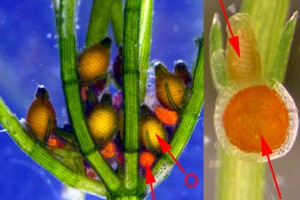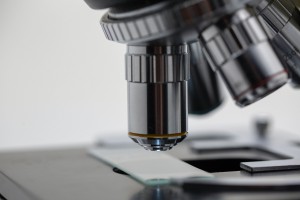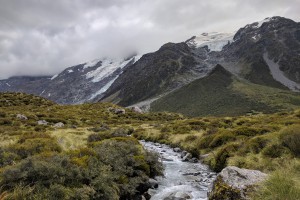Freshwater algae
![[Desmodeesmus] [Desmodeesmus]](/assets/Tools-And-Resources/Identification/algae/desmodesmus_phil1000__ResizedImageWzQwNSwyODld.jpg)
[Desmodeesmus]
Freshwater algae include a wide range of organisms that float in the water or grow on submerged surfaces and have the ability to photosynthesise (using sunlight energy, CO2 and water to manufacture organic matter + O2). They include members of a number of different kingdoms including the plant kingdom (the green and red algae), the bacteria (blue-green algae), protozoa (single-celled swimming groups) and many members of the Chromista (for example, diatoms). Many community groups regularly sample freshwater invertebrates and these groups will be accidentally collecting algae in every sample. This web site is designed to help such groups to look more closely into the fascinating world of algae – it’s not as scary as you might think!
So what useful information can you get from algae? Like freshwater invertebrates, certain groups tend to be associated with certain habitat or water quality conditions. In severe cases algae may give way to filamentous bacteria commonly known as “sewage fungus” which would be worth reporting to your regional council pollution hotline. A few algal groups can be toxic and should not be touched by people or animals. Many algal groups are part of the normal stream “microflora” and their presence is simply an indication that a stream ecosystem is functioning normally. Some algae form prolific growths (or “blooms”) in specific conditions, and these conditions might be natural or man-made.
If you’ve collected material from your local stream (even if the original intention was only to look at invertebrates), have a look at the green and brown slimes or tufts in your sample - they are amazing to see under a microscope. Many community groups doing stream sampling are school classes and they will have access to basic compound microscopes (allowing algae to be viewed between a slide and coverslip). Magnifications of 40X, 100X and 200X will allow you to see enough detail to be able to identify many types of algae using the identification keys in this web resource. The community of algae thus revealed may give you information about their habitat, as described in this guide.

![[Binuclearia].](/assets/Tools-And-Resources/Identification/algae/binuclearia__FillMaxWzMwMCwyMDBd.jpg)

![[Chlamydomonas] (dairy effluent pond). Photo: Taranaki Regional Council & Manaaki Whenua](/assets/Tools-And-Resources/Identification/algae/Chlamydomonas-v2__FillMaxWzMwMCwyMDBd.jpg)


![[Pediastrum] (sewage pond), X1000. Photo: Otago Regional Council & Manaaki Whenua](/assets/Tools-And-Resources/Identification/algae/pediastrum1000__FillMaxWzMwMCwyMDBd.jpg)
![[Chara] with round, orange antheridium, X6. Photo: Phil Novis, Manaaki Whenua](/assets/Tools-And-Resources/Identification/algae/chara_phil20__FillMaxWzMwMCwyMDBd.jpg)
![Potentially toxic blooms of planktonic/floating cyanobacteria [Microcystis].](/assets/Tools-And-Resources/Identification/algae/microcystismatamata__FillMaxWzMwMCwyMDBd.jpg)
![The invasive diatom [Didymosphenia].](/assets/Tools-And-Resources/Identification/algae/didymohawea__FillMaxWzMwMCwyMDBd.jpg)
![[Didymosphenia] bloom, Hawea River. Photo: Manaaki Whenua](/assets/Tools-And-Resources/Identification/algae/didymo2__FillMaxWzMwMCwyMDBd.jpg)
